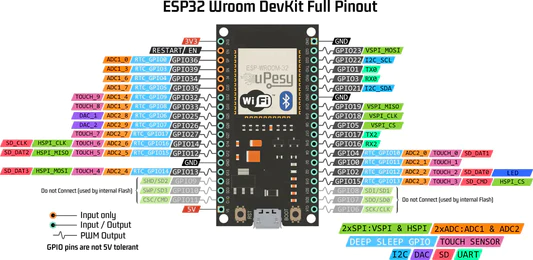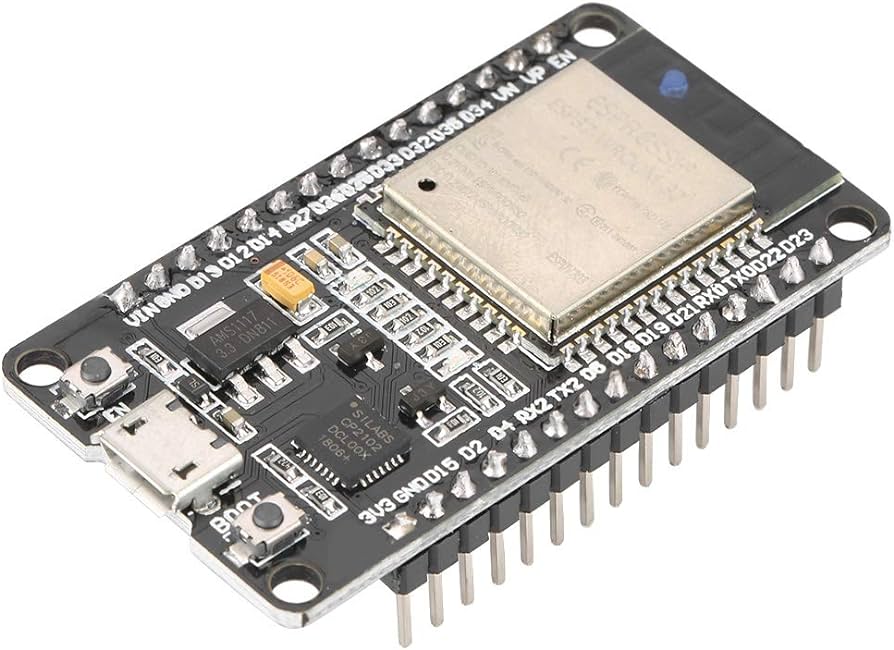The ESP32 is a popular and versatile microcontroller module, known for its powerful capabilities and built-in Wi-Fi and Bluetooth connectivity. Here's an introduction to its basic knowledge, hardware features, and software features:
Basic Knowledge:
The ESP32 is developed by Espressif Systems and is based on the Xtensa LX6 microcontroller architecture. It is designed for IoT (Internet of Things) applications and provides a combination of processing power, connectivity options, and low power consumption. It can be programmed using various development environments, including the Arduino IDE and the ESP-IDF (Espressif IoT Development Framework).
Hardware Features:
-
Microcontroller: The ESP32 module contains a dual-core Xtensa LX6 microcontroller with clock speeds up to 240 MHz. Each core can be independently programmed and used for different tasks.
-
Memory: It typically comes with 520KB of SRAM and can have up to 4MB of external SPI flash memory for program storage and data storage purposes.
-
Wireless Connectivity: The ESP32 module includes built-in Wi-Fi (802.11 b/g/n) and Bluetooth (Bluetooth 4.2 and Bluetooth Low Energy) capabilities, allowing for seamless wireless communication in IoT applications.
-
GPIO Pins: It has a large number of general-purpose I/O (GPIO) pins, which can be used for various purposes, including digital input/output, analog input, PWM (Pulse Width Modulation), and more.
-
Peripherals: The ESP32 features a wide range of peripherals, including UART, I2C, SPI, ADC (analog-to-digital converter), DAC (digital-to-analog converter), timers, and touch sensors.
-
Power Management: It includes power-saving features such as multiple sleep modes and low-power co-processors to optimize power consumption in battery-powered applications.
Software Features:
-
Programming Options: The ESP32 can be programmed using multiple development environments, including the Arduino IDE, ESP-IDF (native SDK from Espressif), MicroPython, and others. It offers flexibility in choosing the programming language and environment that suits your needs.
-
Library Support: The ESP32 has a vast library ecosystem that provides ready-to-use functions and examples for various applications, making development faster and easier.
-
Network Protocols: The software stack of the ESP32 includes TCP/IP network protocols, enabling seamless integration with IoT platforms and cloud services for data exchange and remote control.
-
OTA (Over-the-Air) Updates: The ESP32 allows firmware updates over Wi-Fi, eliminating the need for manual reprogramming and enabling remote maintenance and feature enhancements.
-
Operating Systems: The ESP32 can be used with different operating systems, such as FreeRTOS (Real-Time Operating System) and others, providing task scheduling and resource management capabilities.
-
Built-in Protocols: The ESP32 supports various protocols, including MQTT (Message Queue Telemetry Transport), HTTP, HTTPS, and WebSockets, facilitating integration with IoT applications and web services.
The ESP32's combination of processing power, wireless connectivity, and extensive features makes it suitable for a wide range of IoT applications, including home automation, industrial automation, wearable devices, smart agriculture, and more. Its popularity stems from its versatility, ease of use, and community support, making it a preferred choice among developers.





